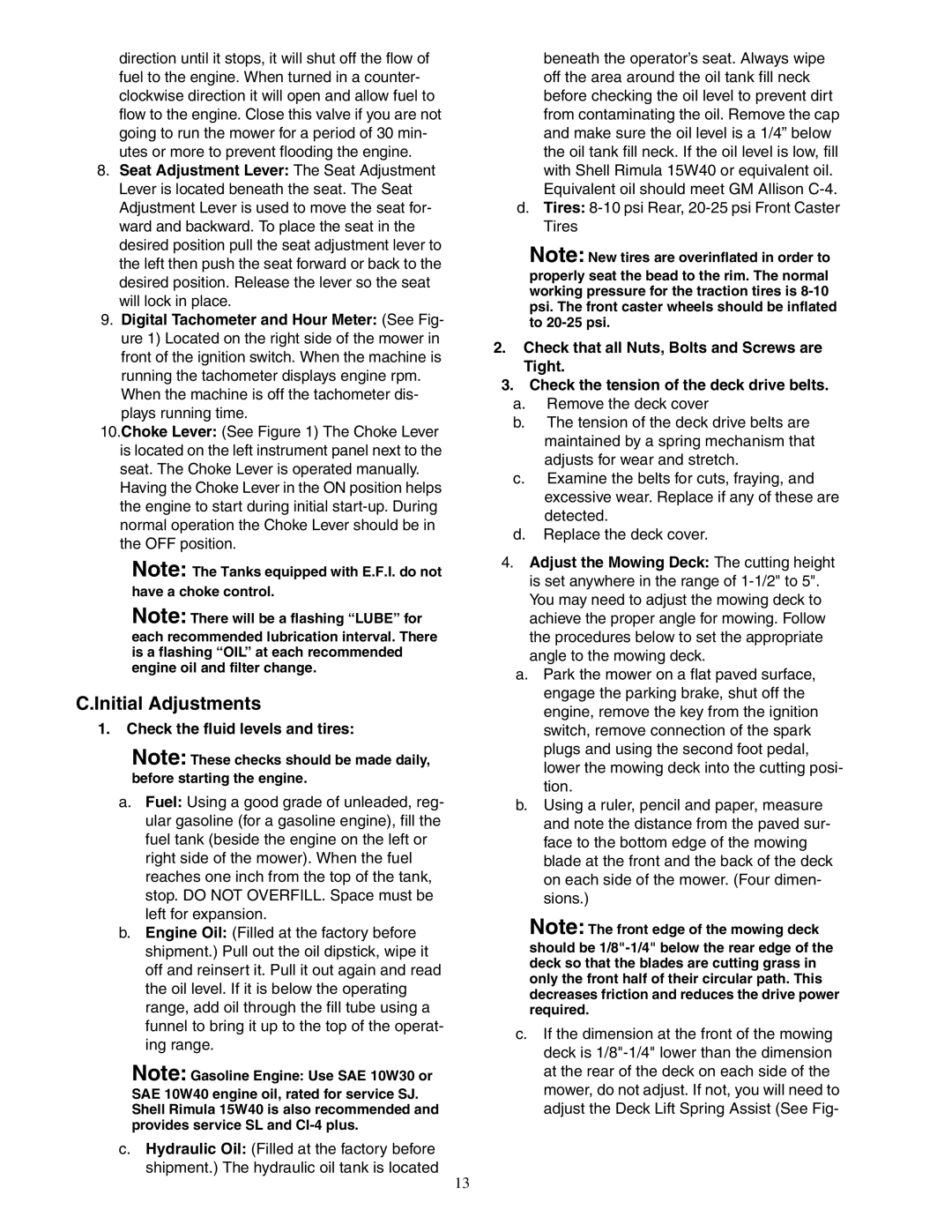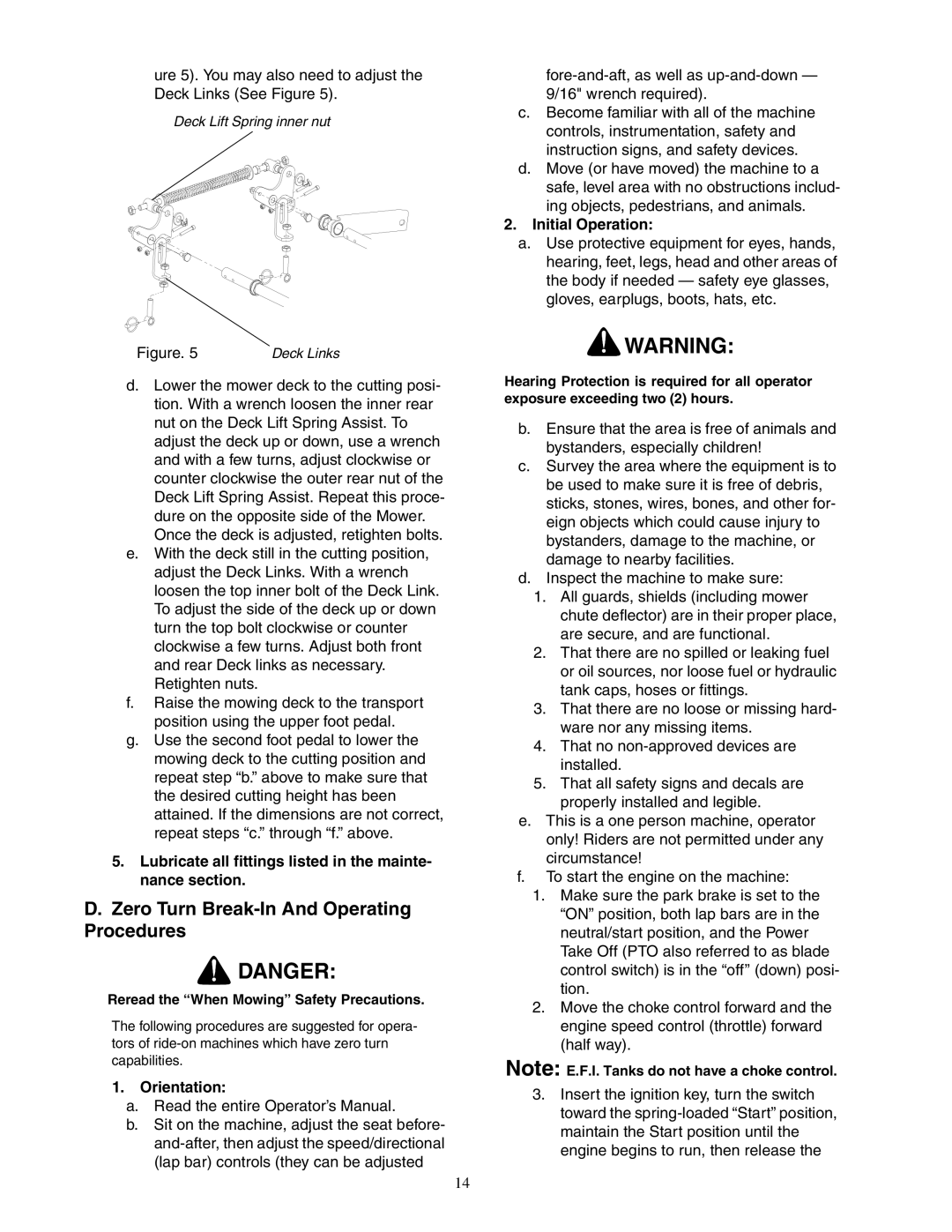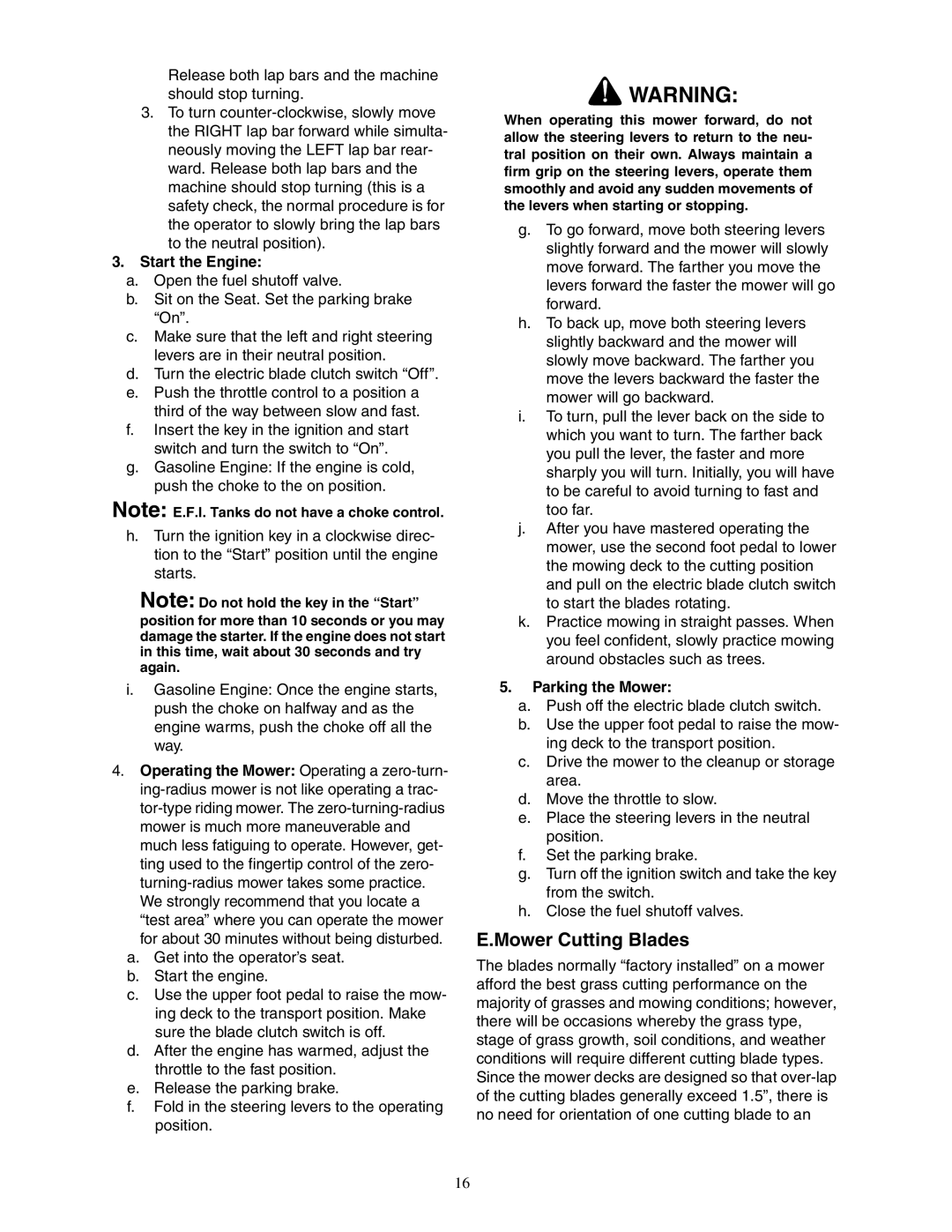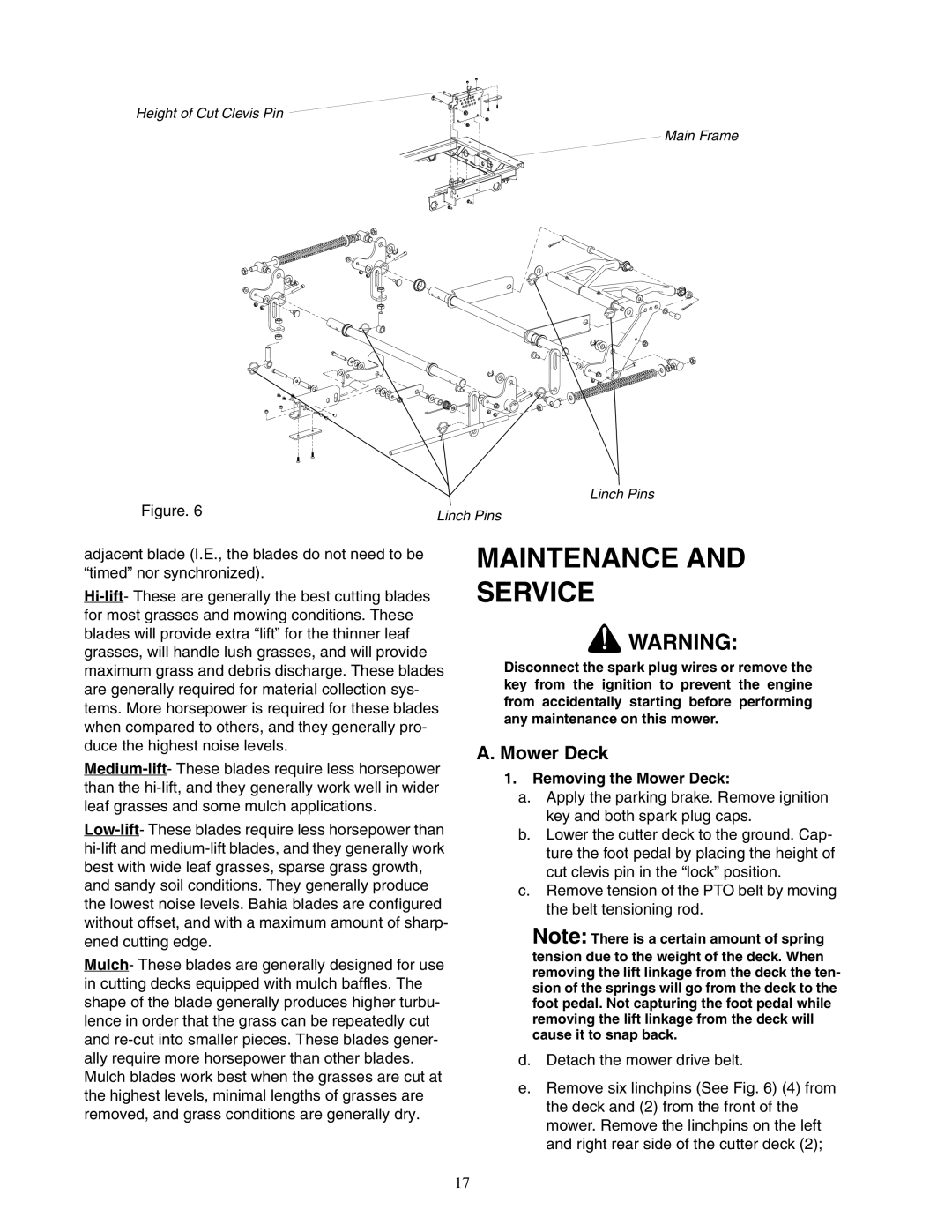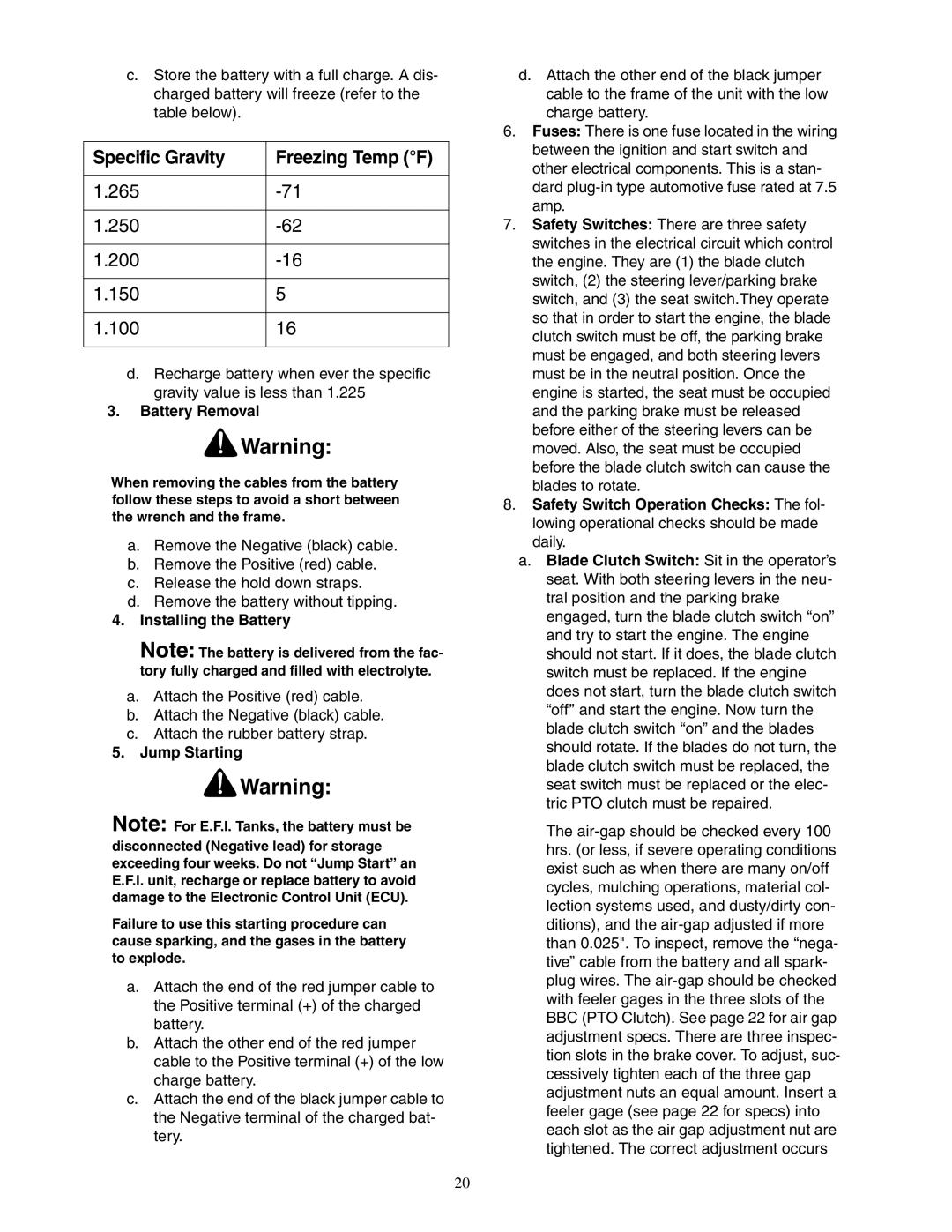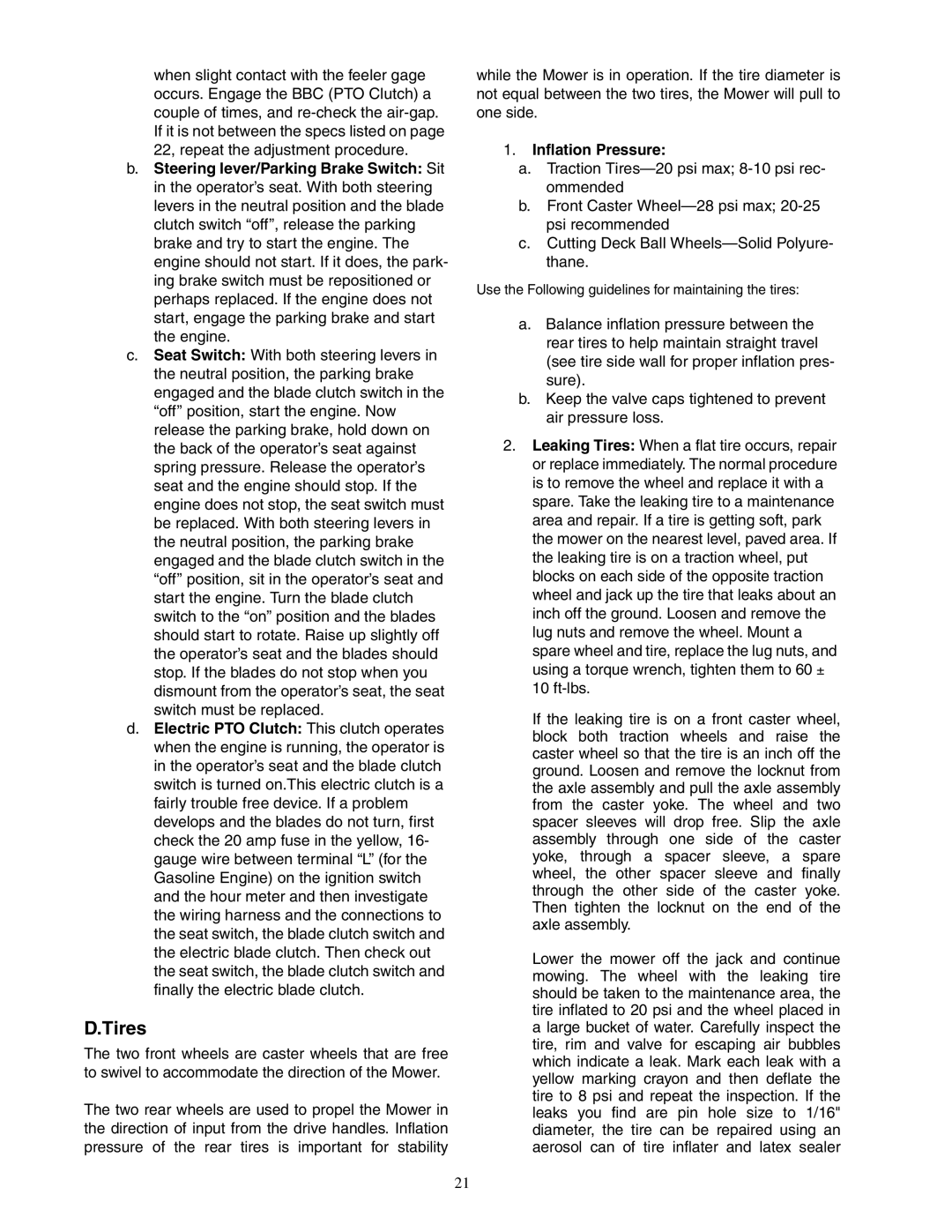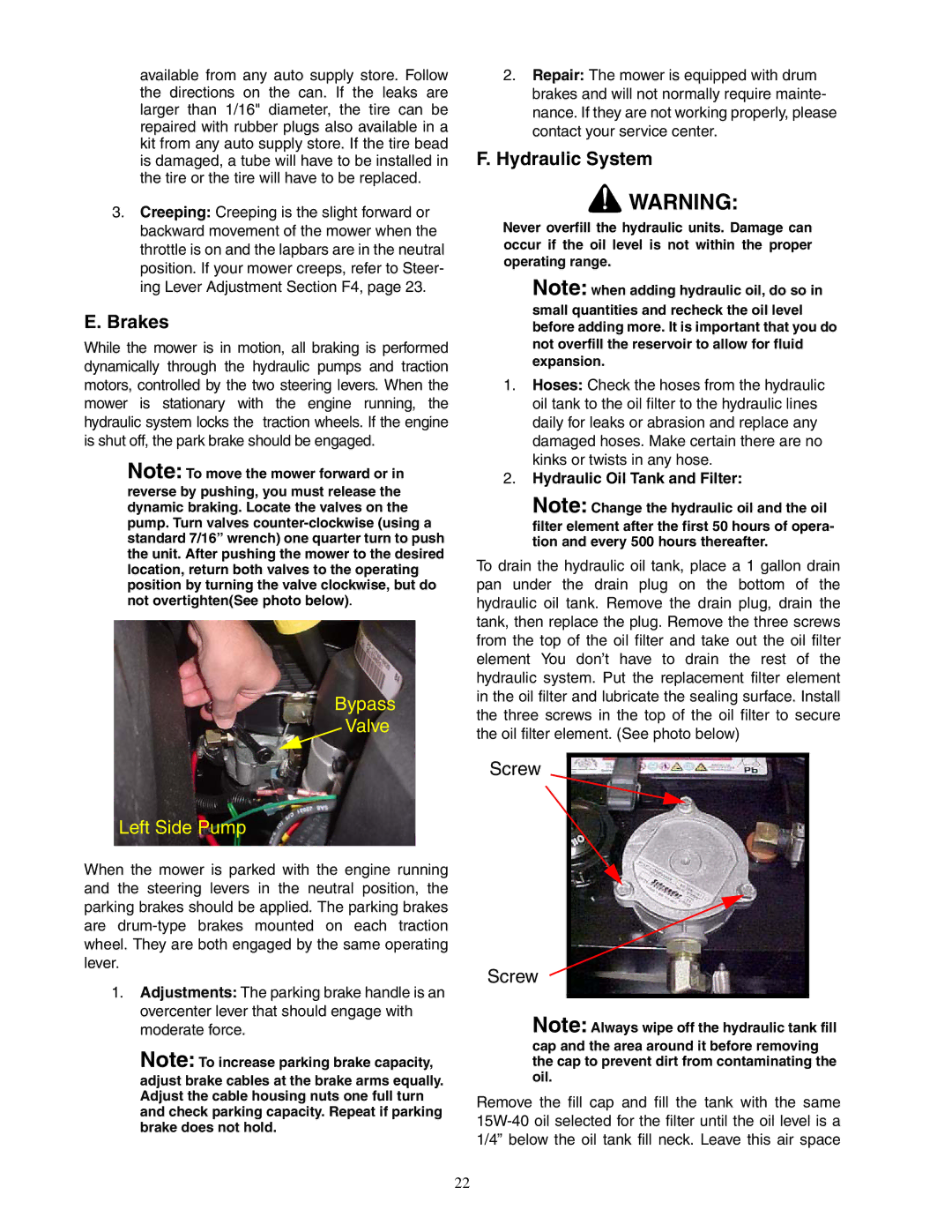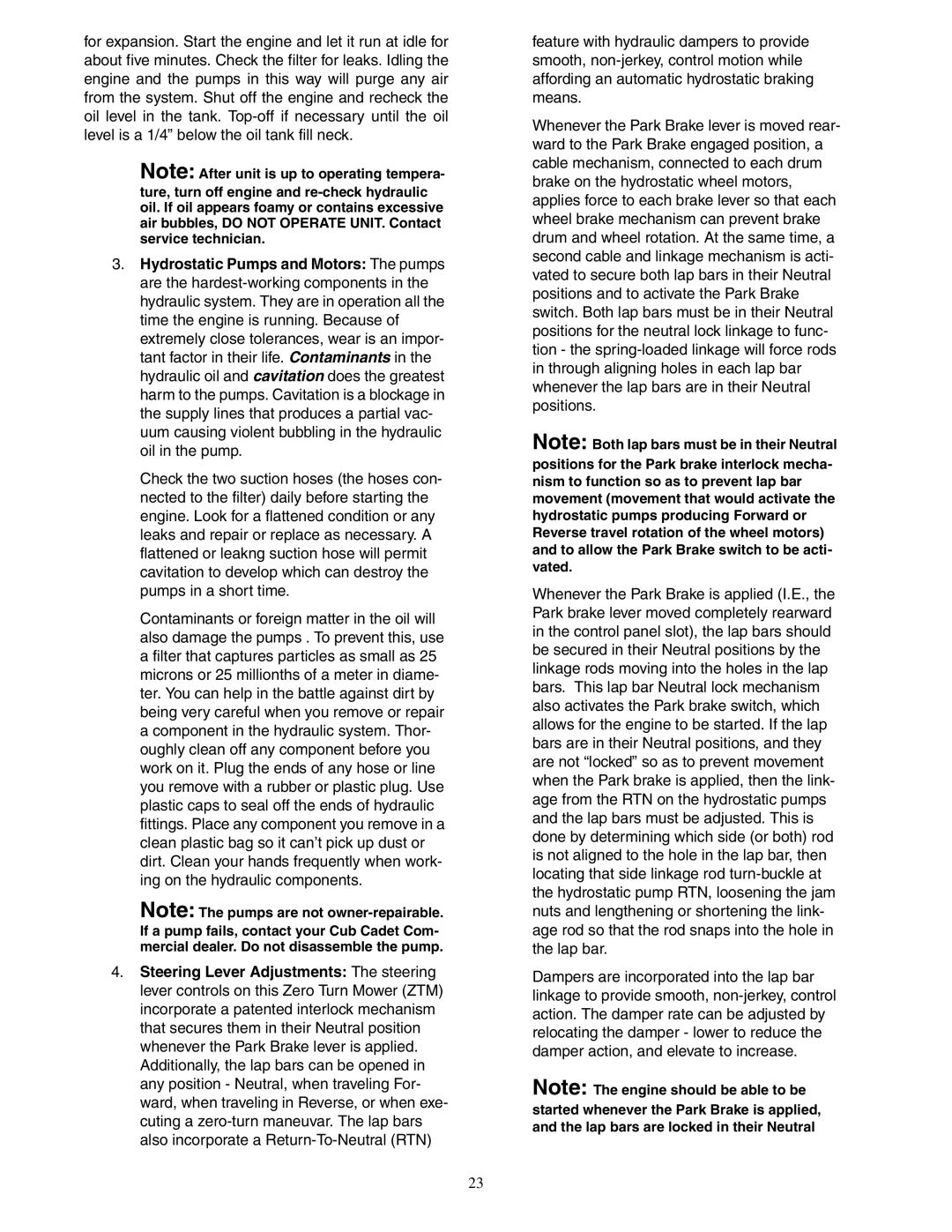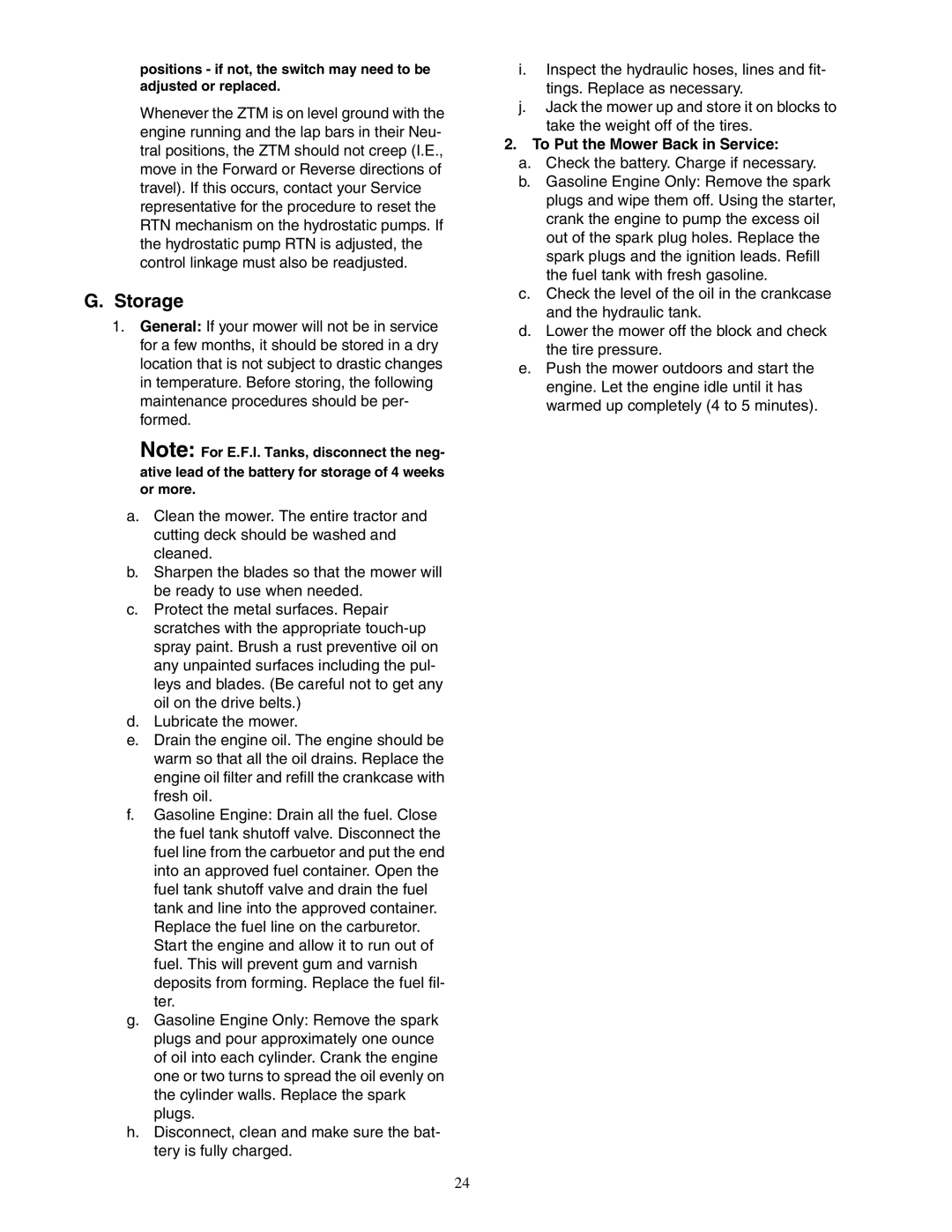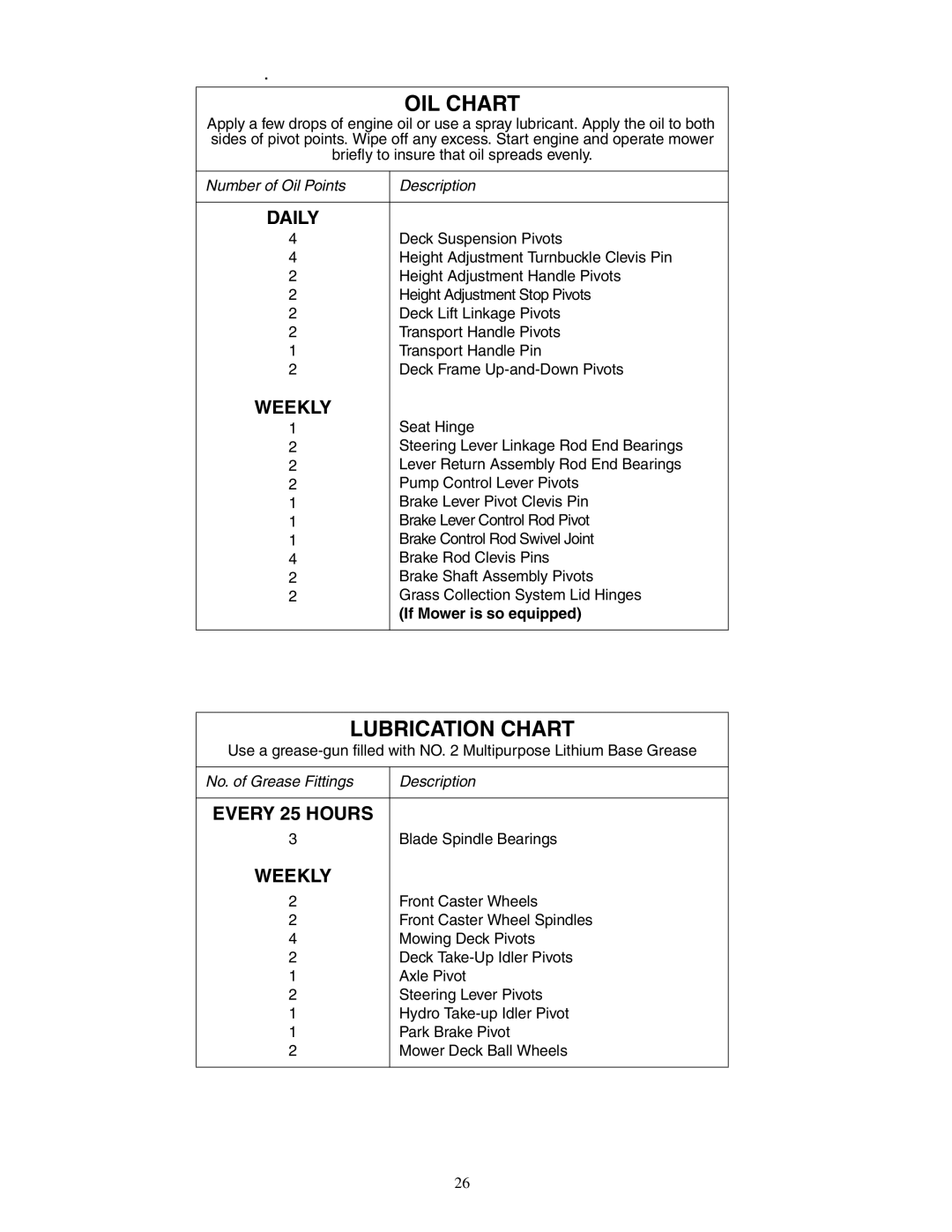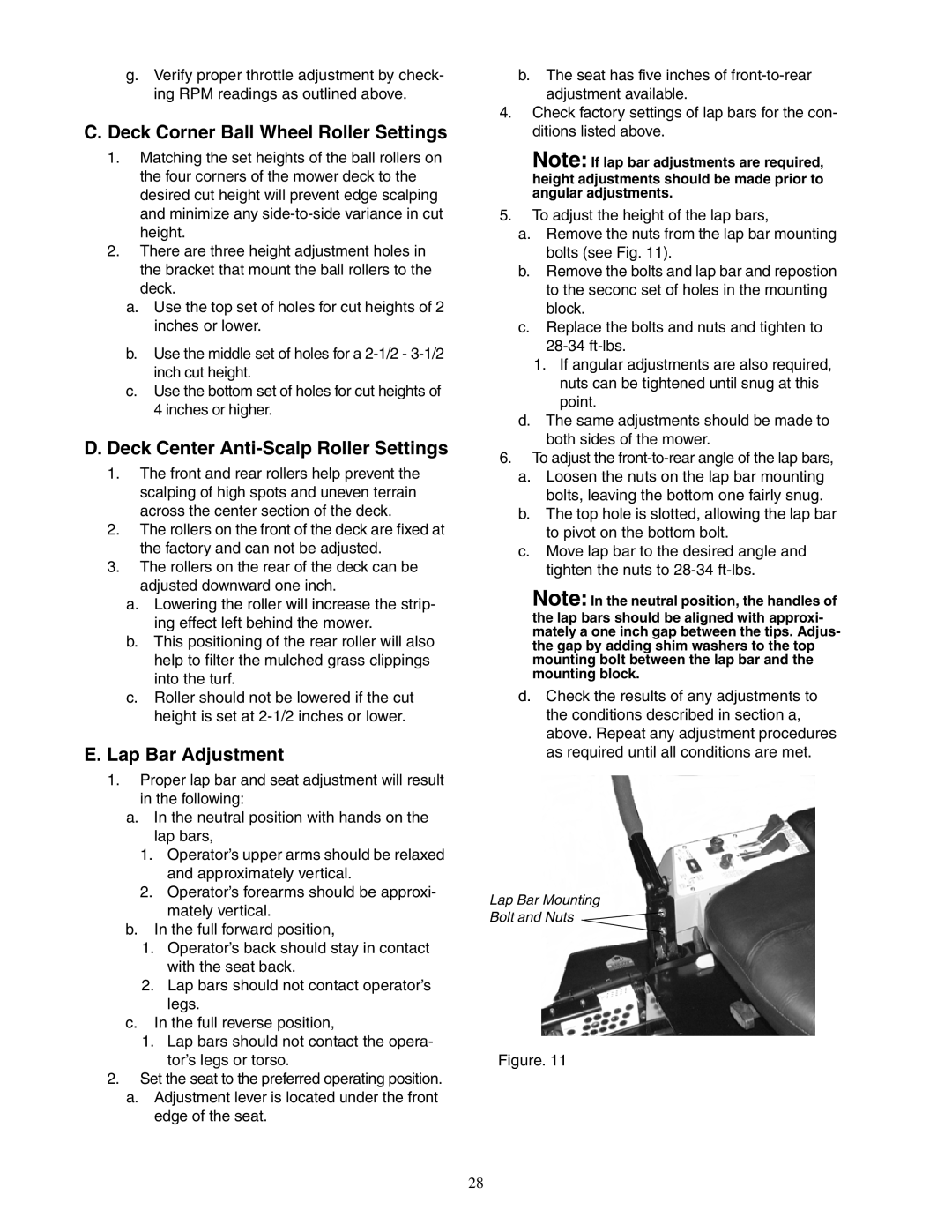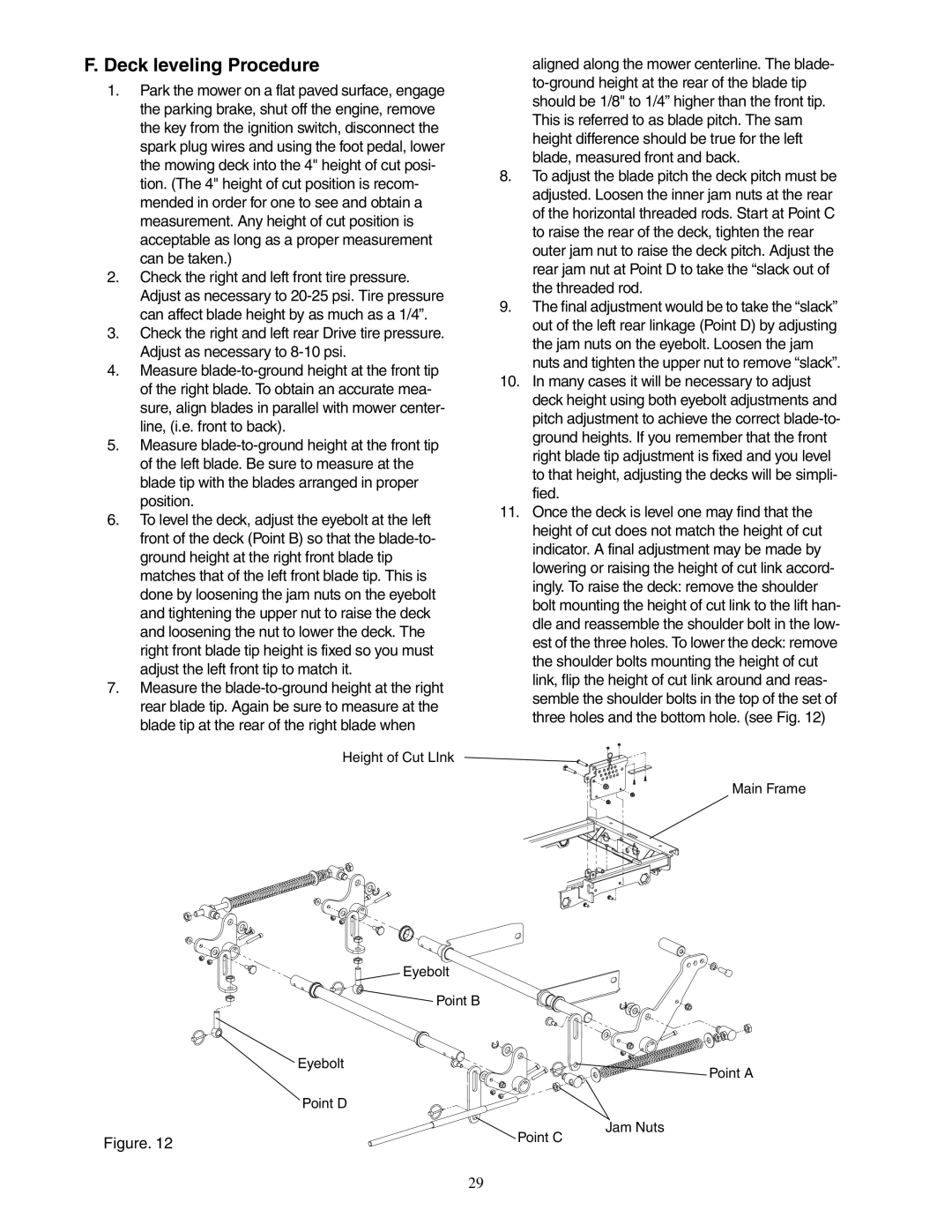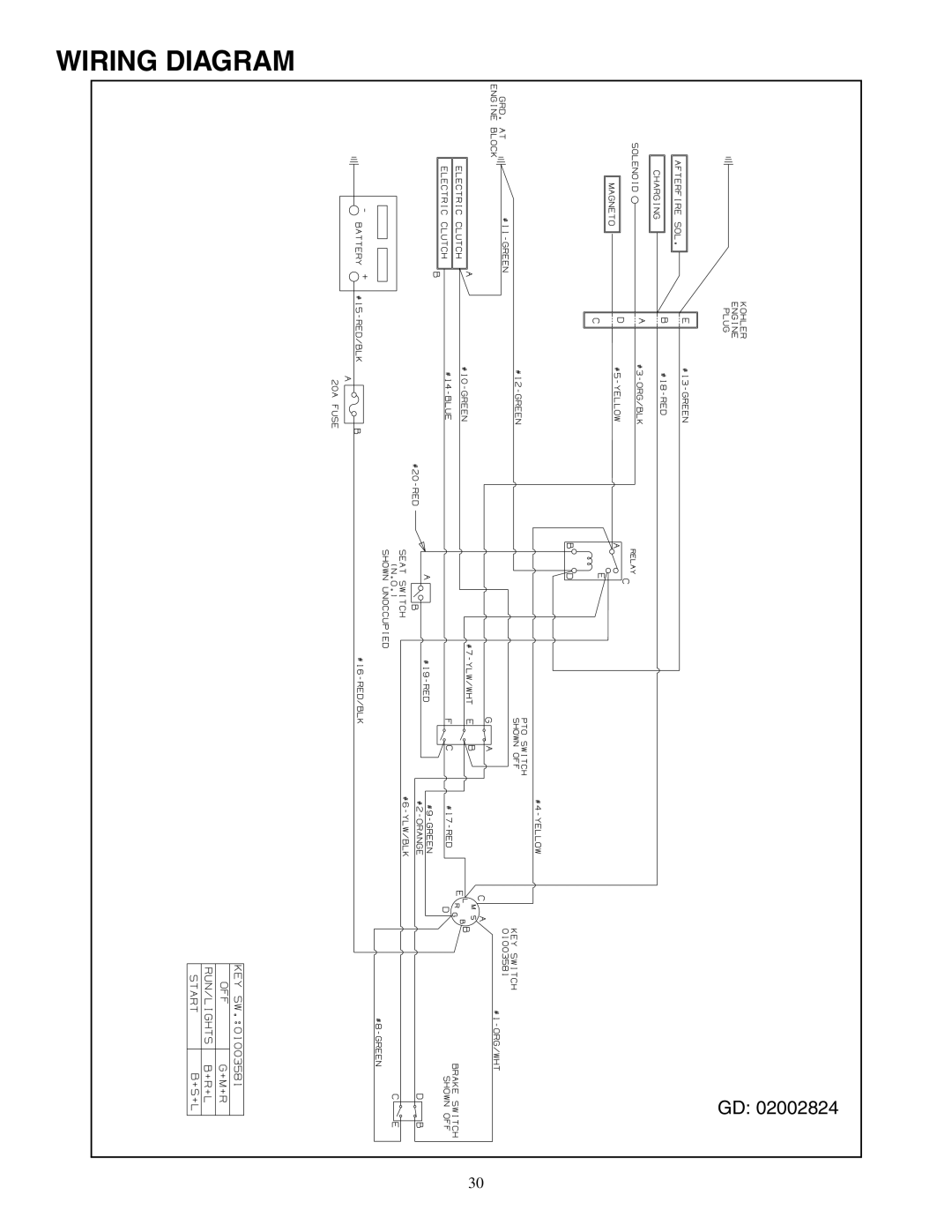c.Store the battery with a full charge. A dis- charged battery will freeze (refer to the table below).
Specific Gravity | Freezing Temp (°F) |
|
|
1.265 | |
|
|
1.250 | |
|
|
1.200 | |
|
|
1.150 | 5 |
|
|
1.100 | 16 |
|
|
d.Recharge battery when ever the specific gravity value is less than 1.225
3.Battery Removal
![]() Warning:
Warning:
When removing the cables from the battery follow these steps to avoid a short between the wrench and the frame.
a.Remove the Negative (black) cable.
b.Remove the Positive (red) cable.
c.Release the hold down straps.
d.Remove the battery without tipping.
4.Installing the Battery
Note: The battery is delivered from the fac- tory fully charged and filled with electrolyte.
a.Attach the Positive (red) cable.
b.Attach the Negative (black) cable.
c.Attach the rubber battery strap.
5.Jump Starting
![]() Warning:
Warning:
Note: For E.F.I. Tanks, the battery must be disconnected (Negative lead) for storage exceeding four weeks. Do not “Jump Start” an E.F.I. unit, recharge or replace battery to avoid damage to the Electronic Control Unit (ECU).
Failure to use this starting procedure can cause sparking, and the gases in the battery to explode.
a.Attach the end of the red jumper cable to the Positive terminal (+) of the charged battery.
b.Attach the other end of the red jumper cable to the Positive terminal (+) of the low charge battery.
c.Attach the end of the black jumper cable to the Negative terminal of the charged bat- tery.
d.Attach the other end of the black jumper cable to the frame of the unit with the low charge battery.
6.Fuses: There is one fuse located in the wiring between the ignition and start switch and other electrical components. This is a stan- dard
7.Safety Switches: There are three safety switches in the electrical circuit which control the engine. They are (1) the blade clutch switch, (2) the steering lever/parking brake switch, and (3) the seat switch.They operate so that in order to start the engine, the blade clutch switch must be off, the parking brake must be engaged, and both steering levers must be in the neutral position. Once the engine is started, the seat must be occupied and the parking brake must be released before either of the steering levers can be moved. Also, the seat must be occupied before the blade clutch switch can cause the blades to rotate.
8.Safety Switch Operation Checks: The fol- lowing operational checks should be made daily.
a.Blade Clutch Switch: Sit in the operator’s seat. With both steering levers in the neu- tral position and the parking brake engaged, turn the blade clutch switch “on” and try to start the engine. The engine should not start. If it does, the blade clutch switch must be replaced. If the engine does not start, turn the blade clutch switch “off” and start the engine. Now turn the blade clutch switch “on” and the blades should rotate. If the blades do not turn, the blade clutch switch must be replaced, the seat switch must be replaced or the elec- tric PTO clutch must be repaired.
The
20





